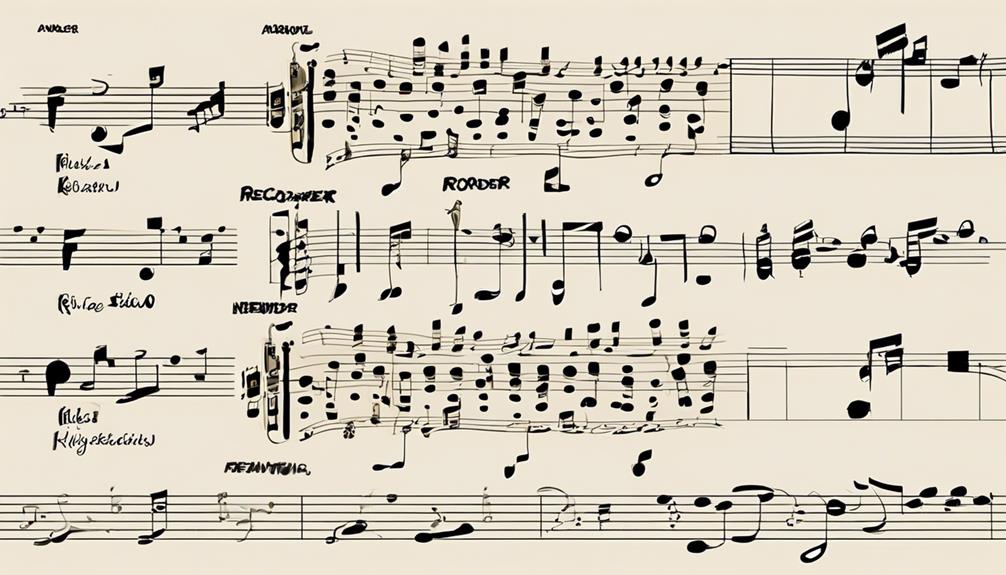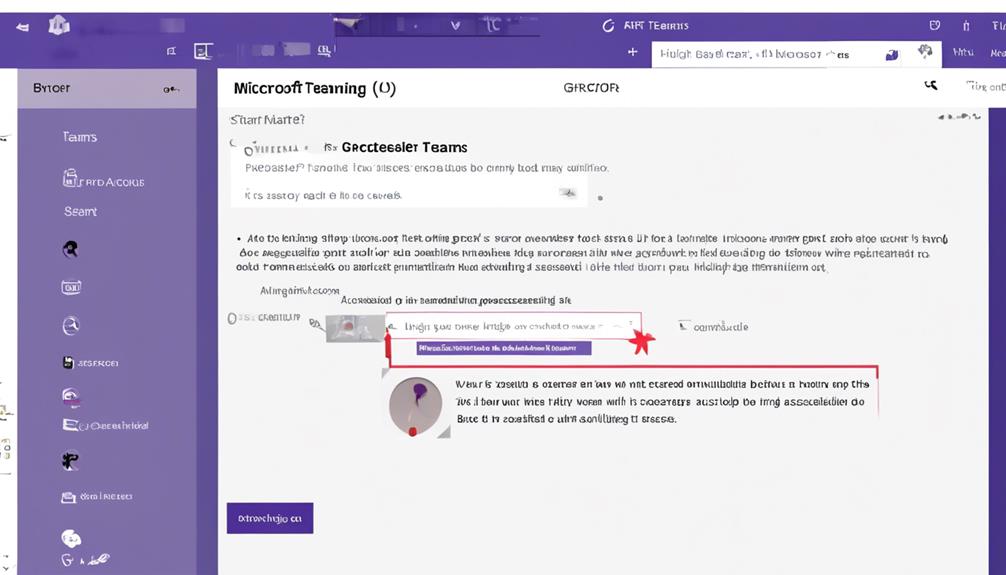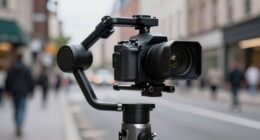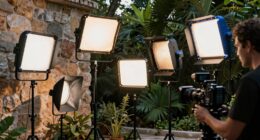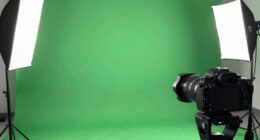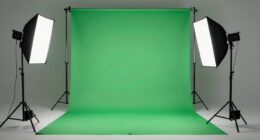In the world of field recording, it is essential to have the correct equipment and techniques in order to capture top-notch audio quality.
But what about the less obvious aspects of the process? How do you navigate environmental challenges or effectively post-process and edit your recordings?
Join us as we uncover the essential elements of field recording, from selecting the right microphone to mastering the art of capturing pristine sound in any setting.
Key Takeaways
- High-quality audio recording equipment is essential for field recording, including an audio recorder with XLR inputs, adjustable sample rates, wind protection, and headphones for monitoring.
- Proper techniques such as careful level setting, positioning the microphone close to the sound source, and managing wind noise are crucial for capturing high-quality audio.
- Selecting the right microphone for field recording depends on specific environmental and recording requirements, with options like shotgun mics, lavalier microphones, and dynamic microphones.
- Overcoming environmental challenges can be achieved through adjustable pick-up patterns, careful gain adjustment, wind protection, compressed recording techniques, and proper location assessment.
Essential Equipment for Field Recording
When embarking on field recording, it's essential to equip oneself with a high-quality audio recorder, as it serves as the cornerstone for capturing pristine sound in diverse environments. A reliable audio recorder should offer XLR inputs to accommodate external microphones, ensuring flexibility and improved sound quality.
Additionally, the capability to adjust sample rates is crucial for capturing high-resolution audio suitable for professional applications. To mitigate the impact of wind noise during outdoor recordings, wind protection such as windshields and blimps is necessary.
Furthermore, field recordists should prioritize the use of headphones to monitor sound levels and quality in real time. As part of the essential equipment, additional microphones like shotgun or lavalier mics can provide versatility and enhance the overall sound recording experience.
Moreover, having stable recording setups with the assistance of stands, grips, and appropriate cables, along with ample storage in the form of memory cards, is paramount for seamless field recording sessions. By prioritizing these elements, one can ensure the production of high-quality field recordings in various settings.
Techniques for Capturing High-Quality Audio
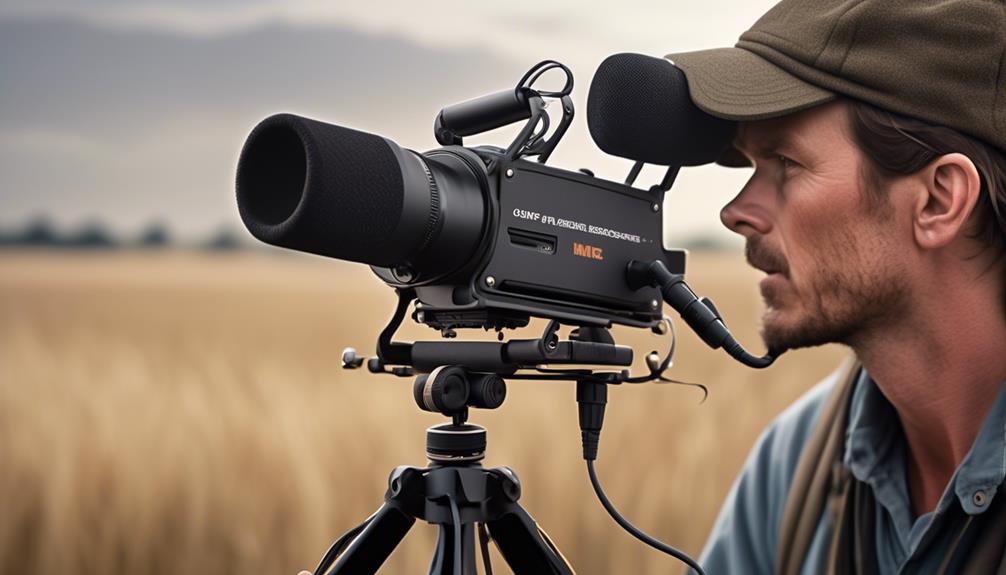
With the foundation of essential field recording equipment in place, we can now explore techniques for capturing high-quality audio in diverse environments. When aiming to capture high-quality audio during field recording, the following techniques are crucial:
- Careful Level Setting: Set recording levels meticulously to avoid clipping or recording at too low a level, ensuring the best signal-to-noise ratio.
- Utilize Good Microphones: Invest in a good mic, such as the Zoom H4n or Tascam DR, to ensure high-quality sound capture.
- Positioning and Experimentation: Position the microphone close to the sound source to capture clear, detailed sound, and experiment with different placements and stereo techniques for varied and immersive experiences.
- Wind Noise Management: Use windshields to reduce wind noise when recording in outdoor environments, ensuring the capture of clean and undistorted sound.
- Monitor and Adjust: Utilize headphones for accurate monitoring during recording, enabling real-time adjustments for optimal sound quality.
Employing these techniques will significantly enhance the quality of recorded audio, enabling the capture of rich, immersive ambient sounds for sound design and field recording purposes.
Selecting the Right Microphone for Field Recording
Selecting the right microphone for field recording involves carefully considering the specific environmental and recording requirements to determine the most suitable microphone type and features. When recording requires capturing sounds in urban environments, shotgun mics are good options due to their ability to isolate the desired sound and minimize background noise.
Lavalier microphones are suitable for voice recording and provide good quality when capturing sound in close proximity. Dynamic microphones are durable and versatile, making them ideal for capturing a variety of sounds in different conditions.
Digital recorders offer portability and technical capabilities such as wind protection and directional pickup patterns, making them suitable for on-the-go recording. When selecting a field recording microphone, it's important to prioritize portability, durability, and technical capabilities. Additionally, it's beneficial to research and compare different microphone options to find the best fit for your needs.
Experimenting with budget-friendly options, such as smartphone add-ons, can also provide valuable experience and insights into different recording techniques.
Tips for Overcoming Environmental Challenges
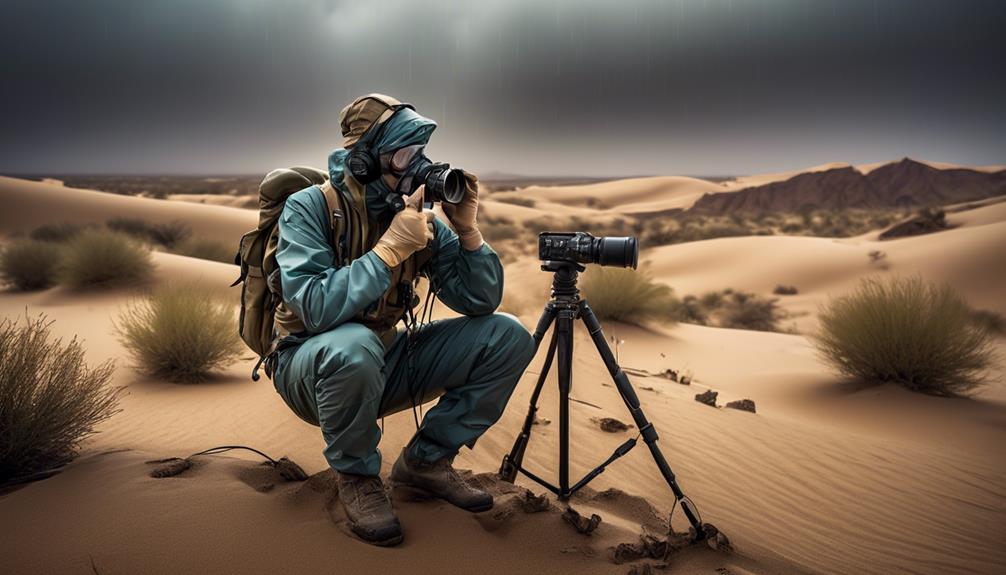
To effectively overcome environmental challenges during field recording, it's essential to meticulously assess the recording location and employ suitable techniques and equipment to mitigate potential obstacles.
- Consider the Directionality of Microphones: Using microphones with adjustable pick-up patterns, such as shotgun or cardioid mics, can help focus on specific sounds directly in front of the recording device, reducing unwanted ambient noise.
- Adjust Gain Settings Carefully: Properly setting the gain levels on audio recorders is crucial to avoid distortion or low signal-to-noise ratios.
- Use Wind Protection: Employing high-quality windshields or dead cats for microphones is a good idea to prevent wind noise from ruining recordings.
- Experiment with Compressed Later Techniques: Recording in high-quality, uncompressed formats like WAV or AIF is essential, but experimenting with compressed recording for monitoring can save storage space and still provide usable material.
- Assess the Location for Future Recordings: Take note of potential environmental challenges during the current recording, such as traffic noise, and consider how to mitigate these challenges next time.
Post-Processing and Editing Field Recordings
When post-processing and editing field recordings, it's essential to have a clear understanding of the intended use and purpose of the recordings. This understanding will guide the editing process, ensuring that the final product aligns with the desired outcome.
Utilizing software such as Adobe Audition can greatly enhance the quality of your recordings. You can remove unwanted noise, adjust EQ and compression, and manipulate the audio to achieve the desired sound. Understanding frequency response and polar patterns is crucial for making informed editing decisions, especially when working with different microphones and recording environments.
Consider the equipment used during the initial recording, such as the Zoom H1n audio recorder with its built-in mics. Understanding the capabilities and limitations of your equipment will inform the post-processing techniques that need to be applied. It's important to maintain the integrity of the original sound you're going for while enhancing its overall quality.
After post-processing, consider editing the recordings to create a compelling narrative or composition. Cut and arrange the recordings to craft a seamless and engaging final product.
Frequently Asked Questions
How Do I Learn Field Recording?
We learn field recording by mastering various techniques and equipment. Outdoor soundscapes are captured using the right microphone choice and environmental sounds. Wildlife recording demands precision in sound capturing. Audio equipment plays a crucial role in preserving natural ambience.
Location scouting is essential for finding the perfect setting. We refine our skills through regular practice and experimentation. Following these recording tips allows us to excel in the art of field recording.
How Do You Get Good Field Recordings?
To get good field recordings, we prioritize the outdoor environment. We carefully select microphone choices to capture diverse soundscapes. Our equipment setup accounts for wildlife sounds and ambient noise, adapting to varying weather conditions.
We apply recording techniques that leverage natural acoustics, ensuring high-quality audio editing. Our approach is technically precise, reflecting a dedication to mastering the art of field recording.
What Do You Use for Field Recordings?
For field recording, we utilize portable microphones, like shotgun mics for outdoor recording and omni-directional mics for capturing nature sounds.
Our gear includes high-quality audio recorders with good windproofing, making them suitable for remote locations and urban soundscapes.
We employ field recording software to enhance environmental recordings and wildlife sounds.
What Is the Best Sample Rate for Field Recording?
For field recording, the best sample rate is contingent on factors like audio quality, environmental considerations, and equipment choices.
Higher sample rates, such as 96 kHz or higher, are ideal for capturing high-frequency content like birdsong and insect noise. They offer more flexibility in post-production for sound editing.
However, these higher rates also demand more data storage. It's important to consider the trade-offs and device capabilities when selecting the optimal sample rate for field recording.
Conclusion
In conclusion, field recording requires careful consideration of equipment, techniques, and environmental challenges. By selecting suitable gear, mastering capture techniques, and overcoming environmental obstacles, one can achieve high-quality audio recordings.
Post-processing and editing further enhance the final product. With persistence and practice, one can produce professional field recordings that are rich, resonant, and remarkable.


